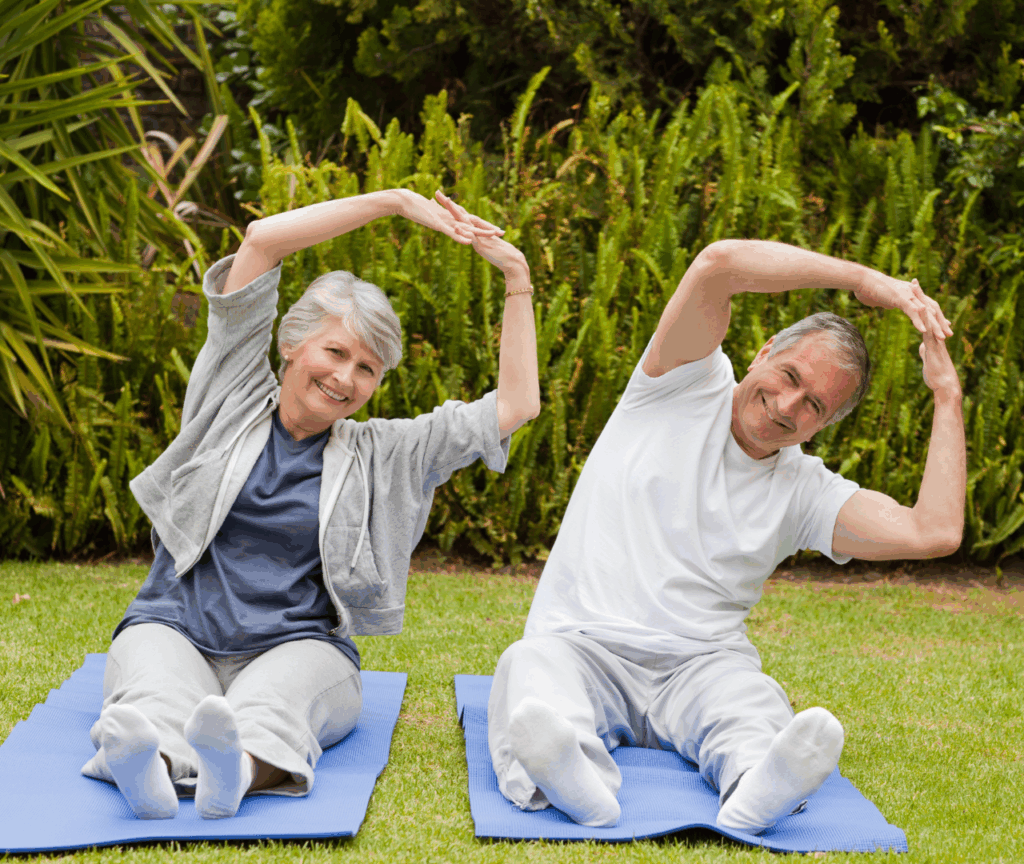The most effective balance exercises for fall prevention in seniors include:
- Heel-to-toe walk
- Single-leg stands
- Sit-to-stand exercises
- Tai Chi or gentle yoga
- Marching in place
- Side leg raises
- Standing knee lifts
- Balancing with support (e.g., behind a chair)
These exercises are simple, safe, and ideal for older adults to build stability, strength, and confidence in movement—key factors in reducing fall risk.
Why Balance Matters for Seniors
Balance is one of the most important physical abilities for aging adults. It allows for steady walking, smooth transitions (like standing from a chair), and helps prevent dangerous falls. As we age, muscle strength, flexibility, and reflexes naturally decline, making falls more likely—especially without targeted exercise.
That’s why Balance Awareness Week, held every September, is an important opportunity to focus on this critical part of senior wellness.
According to the CDC, more than 1 in 4 seniors falls each year, but less than half report it to their doctor. Regular balance exercises significantly reduce that risk and help seniors stay independent longer.
8 Balance Exercises Seniors Can Do Safely
Each of these exercises can be done at home with minimal or no equipment. Seniors should always use a sturdy chair or wall for support and consult their healthcare provider before starting any new exercise routine.
1. Heel-to-Toe Walk
This exercise improves coordination and stability.
How to do it:
- Stand upright and place the heel of one foot directly in front of the toes of the other foot.
- Walk forward in a straight line, heel to toe, for 10–15 steps.
- Use a wall or countertop for support if needed.
2. Single-Leg Stand
Improves strength and balance in each leg individually.
How to do it:
- Stand behind a sturdy chair.
- Hold the back of the chair with one or both hands.
- Lift one foot slightly off the ground and hold for 10 seconds.
- Switch legs and repeat.
- Aim for 5–10 repetitions on each leg.
3. Sit-to-Stand
Strengthens leg muscles and simulates everyday movement.
How to do it:
- Sit in a sturdy, armless chair.
- Cross arms over your chest.
- Slowly stand up without using your hands, then sit back down.
- Repeat 10 times.
4. Marching in Place
Builds balance and raises heart rate gently.
How to do it:
- Stand tall and lift one knee to hip height (or as high as is comfortable).
- Lower it and repeat with the opposite leg.
- March in place for 30–60 seconds, using a chair or wall for balance as needed.
5. Side Leg Raises
Targets the outer hips and improves lateral balance.
How to do it:
- Stand behind a chair and hold it for support.
- Slowly lift one leg out to the side without leaning.
- Hold for a few seconds, then return to center.
- Repeat 10–15 times per leg.
6. Standing Knee Lifts
Strengthens core and leg muscles for better balance.
How to do it:
- While standing tall and holding a chair, lift one knee toward your chest.
- Hold briefly, then lower and switch legs.
- Repeat 10–15 times per side.
7. Tai Chi Movements
Tai Chi is a gentle exercise with proven benefits for balance and fall prevention.
Why it helps:
- Focuses on slow, controlled movements and posture.
- Improves strength, coordination, and body awareness.
- Can be done in-person or through online senior-friendly classes.
Look for beginner Tai Chi classes at senior centers or wellness clinics.
8. Toe and Heel Raises
Improves ankle strength and stability.
How to do it:
- Stand behind a chair.
- Raise up on your toes, hold for a few seconds, then lower.
- Next, raise your toes while your heels stay on the floor.
- Do 10 repetitions of each.
Tips for Safe Exercise
- Always warm up with light walking or arm circles.
- Use a support surface, like a counter or sturdy chair.
- Start slow and increase reps gradually.
- Wear supportive shoes with non-slip soles.
- Exercise in a clutter-free area to avoid trip hazards.
- If dizziness or pain occurs, stop immediately and consult a professional.
For seniors with balance issues due to vestibular problems or chronic conditions, working with a physical therapist may be the best option.
How to Participate in Balance Awareness Week
Balance Awareness Week is about more than just exercises—it’s about education, prevention, and empowering older adults.
Here are a few ways to get involved:
- Schedule a fall risk assessment with a doctor or physical therapist.
- Host a balance workout session with family or neighbors.
- Share resources on social media to raise awareness.
- Declutter the home and remove tripping hazards like cords and rugs.
- Talk to loved ones about the importance of proactive fall prevention.
Conclusion
Improving balance isn’t just about preventing falls—it’s about preserving independence, mobility, and confidence in daily life. The exercises listed above are safe, effective, and easy to integrate into any senior’s routine.
Use Balance Awareness Week as the perfect opportunity to check in on your aging loved one’s stability, build a balance-focused exercise routine, and create a safer living space. A few minutes of movement each day can lead to a longer, healthier, and more active life.

